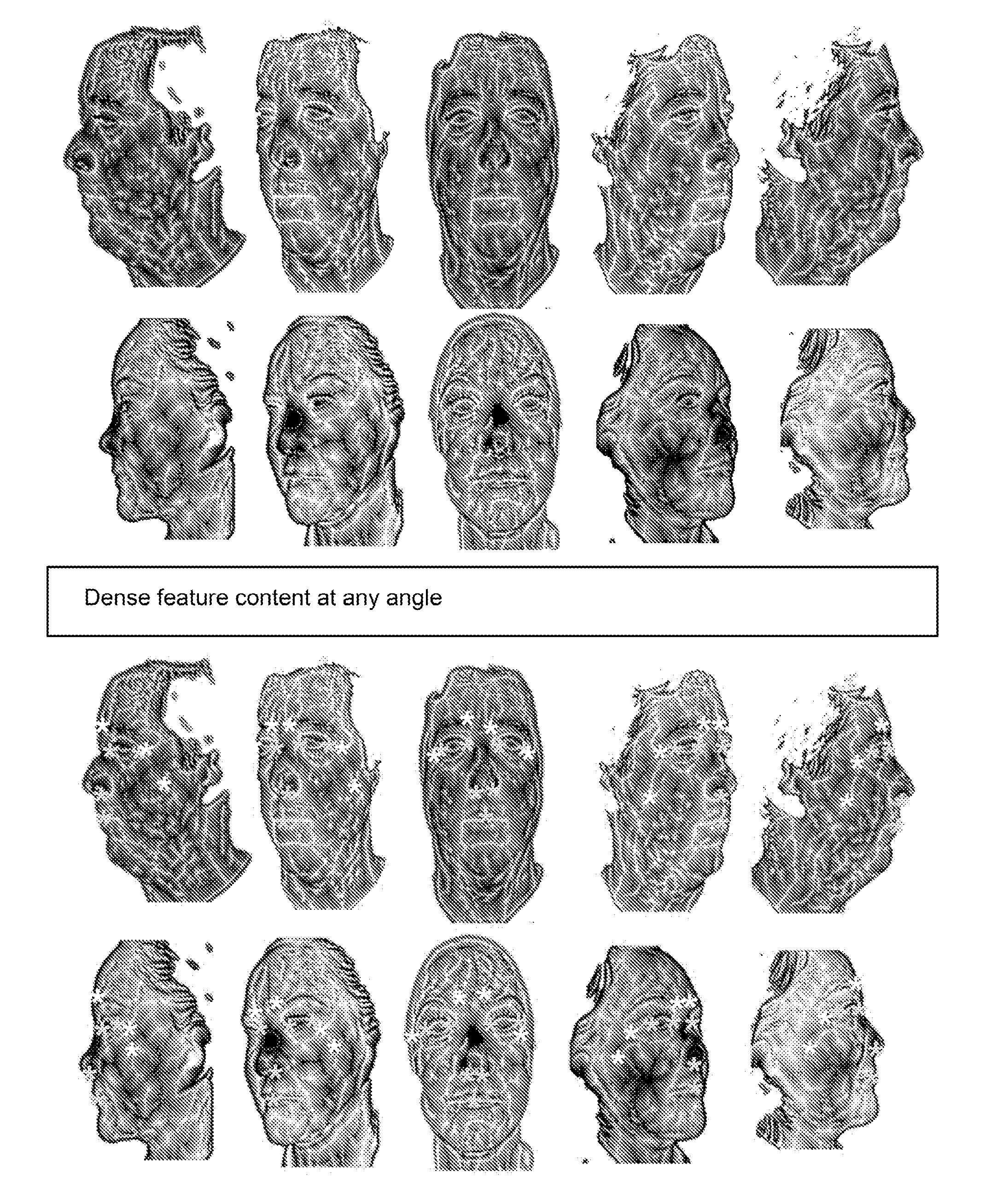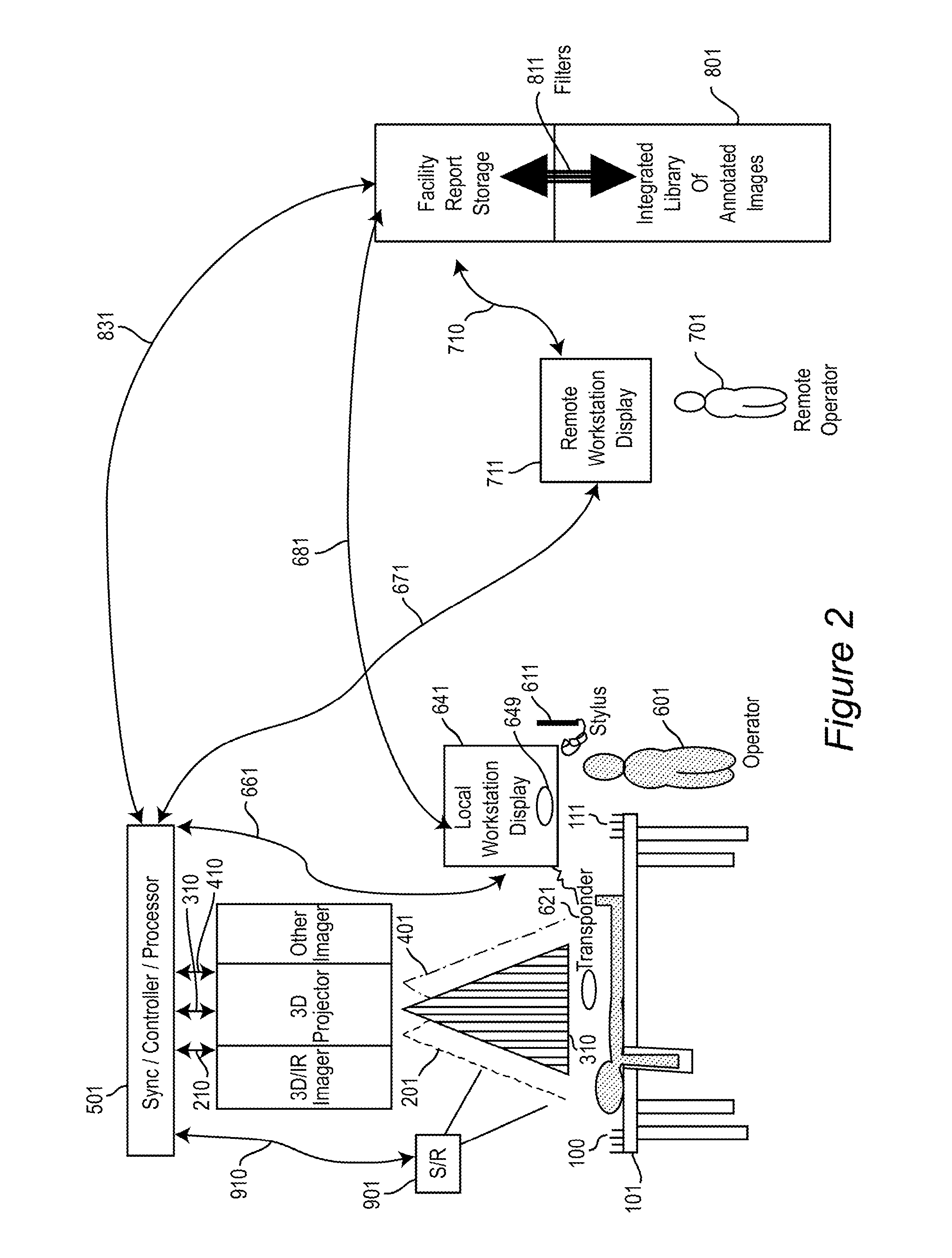System and method for using three dimensional infrared imaging to identify individuals
a three-dimensional infrared and anatomical imaging technology, applied in the field of infrared imaging, can solve the problems of prone to errors in manually segmenting a structure in three-dimensional data, requiring a longer scanning time, and requiring a large amount of scanning time, so as to reduce the limitations of each sensor
- Summary
- Abstract
- Description
- Claims
- Application Information
AI Technical Summary
Benefits of technology
Problems solved by technology
Method used
Image
Examples
case i
[0394, the Biometric System Selects the Identifying Area.
[0395]3D / IR / Visual imagery is collected of a broad area, such as a face, but only a sub-area is used for identification. The sub-area is selected by reference to landmarks that can be determined from one or more layers of the imagery. For example, a full facial profile image can be obtained. The selected sub-area can encompass a narrow swath extending from the mouth corner to the lower ear lobe, which is used to produce a thermal biometric signature. The curvilinear thermal features within that swath are determined along with their elevation contours. All or some of the features may be used for identification by matching against a database of previously extracted swath patterns. Anatomical structure information observable in the infrared swath images, such as blood vessels, moles, scars, lymph nodes, sweat glands, and wrinkles, can be used to precisely align enrollment and identification swaths. Standard pattern recognition te...
case ii
[0396 the Biometric Subject Selects Identifying Area
[0397]The subject can select any area of his body of appropriate size, and use it to produce his identifying biometric. No one else, and no component of the system, need be aware of what area of his body he selects. The total skin surface for an average size adult is on the order of 9 square meters. The portion that could be conveniently used for biometric identification using a handheld sensor in privacy includes the face, neck, hands, lower arms, legs and upper chest. There are different feature densities in the various areas. The required size of the sensor array is determined by the spatial resolution of the sensor detectors, their sensitivity, and the size population to be uniquely identified. For a small area of the skin, elevation can be assumed constant and the sensor can employ means to maintain a constant distance between sensor and skin. Therefore, a 2D / IR sensor array can be used for static imaging or a 1D array can be ...
PUM
 Login to View More
Login to View More Abstract
Description
Claims
Application Information
 Login to View More
Login to View More - R&D
- Intellectual Property
- Life Sciences
- Materials
- Tech Scout
- Unparalleled Data Quality
- Higher Quality Content
- 60% Fewer Hallucinations
Browse by: Latest US Patents, China's latest patents, Technical Efficacy Thesaurus, Application Domain, Technology Topic, Popular Technical Reports.
© 2025 PatSnap. All rights reserved.Legal|Privacy policy|Modern Slavery Act Transparency Statement|Sitemap|About US| Contact US: help@patsnap.com



